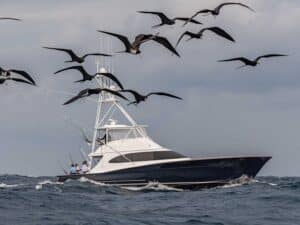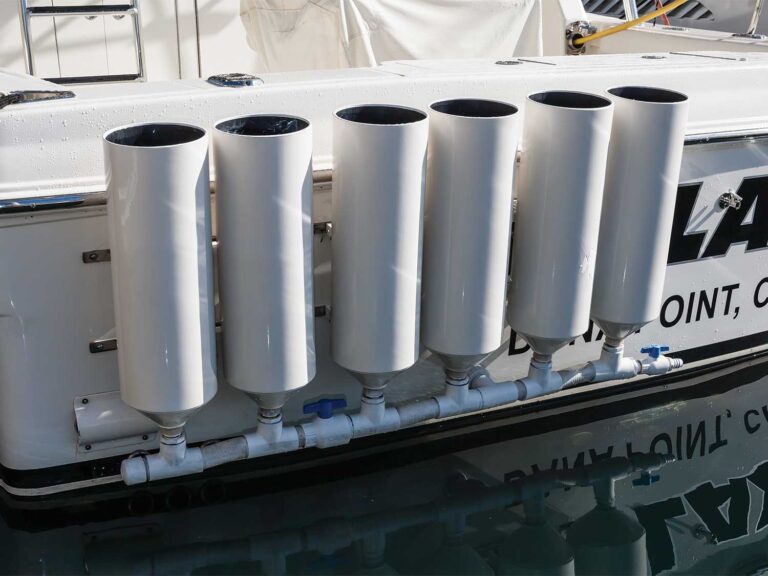
Special delivery: Sign up for the free Marlin email newsletter. Subscribe to Marlin magazine and get a year of highly collectible, keepsake editions – plus access to the digital edition and archives.
The ability to adapt is without a doubt the key to success in almost every facet of life, and this holds true in fishing as well. There is no question that in nearly every location in the world, our fisheries are seasonal and changing—no one year is exactly like the next. This seems to be even truer over the past five to 10 years, especially from what I have personally seen with the numerous areas I fish along the East Coast and in the Caribbean.
Know the Rules
First and foremost, know and understand the regulations throughout each season in your region. It seems the laws change every year, and it is our responsibility to know what they are and what the changes are. You don’t want to get caught catching anything out of season, undersize, or, in the case of bluefin tunas and some other species with slot limits, oversize. Infractions like that quickly get around through dock talk and will ding your reputation, and quite possibly your wallet too.
If you want to keep catching fish throughout the year, or throughout the season, adapting to the bite is crucial. Being ready for any scenario you might encounter, even when you least expect it, can make the difference between a mediocre day and a great day.
Changes in Seasons and Locations
As I mentioned, no one season is like the next. For example, Stuart and Fort Pierce, Florida, used to have a fantastic and consistent winter sailfish season each year. Now it seems that the sailfish bite there is better and more consistent in the summer. Also, in South Carolina and North Carolina, the past few years have resulted in phenomenal blue marlin fishing compared with past seasons. The Carolinas have also offered fishermen consistent sailfish numbers in recent years, especially throughout the summer and fall.
My point is that you have to be ready to adapt to what the season throws your way. If the billfish don’t show up and you’re in the middle of an epic tuna bite, then it’s time to go tuna fishing. Tons of mahi around? Be rigged and ready to go get them.
Where I spend my summer and early fall in New Jersey, the offshore fishing season starts in late May, and some bites don’t pick up until early June, where we get great action with mixed-bag tuna fishing in our canyons in the 100-to-300-fathom depths. These tunas come in with the early-season Gulf Stream warm-water eddies that break away and move into our continental shelf. Bluefin, yellowfin and bigeye tuna are all somewhat in the same area during this time, and trolling is by far the most effective method for catching them.

As we get further into June, the fish seem to split up. Bluefin are found inshore in 20 to 40 fathoms, while the yellowfin and bigeye tuna take over the canyons. In some years, the yellowfins move inshore by late June; and in others, they don’t get there until mid-July. Even still, you can effectively catch them on the troll regardless of where they are located. I have always found that during this time of year I tend to have better success on plastics such as daisy chains and spreader bars, along with skirted ballyhoo. We tend to pull more of a mixed spread during this part of the season. That said, it’s all highly dependent on the forage in the area, which tends to be primarily smaller squid.
Once we get into July, when the water starts to warm up, we see some mahi and marlin filtering in, while the yellowfins start to show up on the inshore lumps in 20 to 40 fathoms. July is always questionable. Some years we see a great trolling bite for yellowfins and bigeyes in the canyons, and fantastic inshore action for yellowfin tuna. We generally target these inshore yellowfins by chunking for them with butterfish and sardines, as well as live baits if we can get them. Jigging and popping can also be an effective strategy for these inshore tunas. Some years the canyon and offshore fishery slows down in July, and the inshore yellowfin tuna bite ends up being your only good option.
As we get into August, the inshore tuna bite in certain areas can be excellent. The marlin fishing starts to heat up, along with the mahi bite, which takes place out in the canyons and beyond. Sometimes the mahi push way inshore as well, even as far inside as 10 fathoms. These fish are a go-to for many boats in August, because you can hit any floating fish or lobster trap markers and buoys with chunks and live bait and expect to catch some. This action continues into September, aligning with the great marlin fishing we also expect because the fish are loading up on food before they depart our waters until next year.
Typically, we again start to see good numbers of tunas out in the canyons in September and October. The question is: Which technique is the best option this time of year? I have had some great days trolling for tunas in the fall, but the past few years chunking has been the only way to catch them consistently. We used to see insane results nighttime chunking, but the daytime chunk has been far better the past two seasons. This is also the time we have more wahoo around, making it worth targeting them. And the swordfishing can get to be fantastic while fishing at night or daytime deep-dropping.
As you can see, just from examining the New Jersey offshore fishing season, if we want to catch fish, we have to adapt. You must to be ready to fish multiple different ways on any given day, especially once you get into the middle of the season, because you never know what technique will yield results. I have had trips where we started trolling in the canyons for tunas at first light, then switched over to white marlin fishing for the later part of the morning, and then eventually ran to the inshore lumps to catch yellowfin tuna chunking and jigging. All of this goes down in one day, when adapting to the bite is key not only for action, but also for success.
Read Next: Potential Shifts in Blue Marlin Habitat.
Be Prepared for Changes
The point is that every year is different, and you can write the same script for any location. You have to be prepared, and willing to adapt to what is working. No matter where you are in the world, there is always some kind of off-season. This is your opportunity to rig all of your hook rigs and lures, prep all of your rods and reels, and also just mentally get ready for every situation you could see on the water.
Adapting to the bite daily—and seasonally—will make you a far more successful fisherman on any given day.







